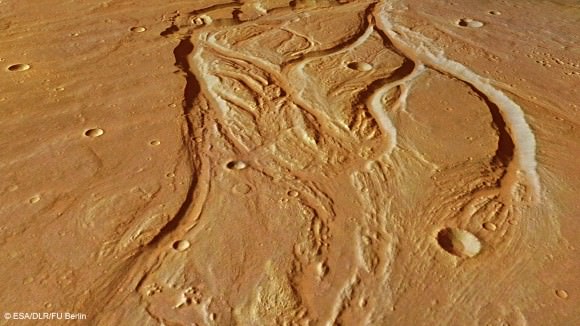This picture is an example of why Martian scientists like to get their groove on. This late 2013 snapshot of Osuga Valles — a part of the vast Valles Marineris gorge that cuts across the Red Planet — shows the leftovers of an ancient flood. The European Space Agency highlighted the area in a release this week.
“Catastrophic flooding is thought to have created the heavily eroded Osuga Valles and the features within it. Streamlines around the islands in the valley indicate that the direction of flow was towards the northeast … and sets of parallel, narrow grooves on the floor of the channel suggest that the water was fast flowing,” the European Space Agency stated.
“Differences in elevation within the feature, along with the presence and cross-cutting relationships of channels carved onto the islands, suggest that Osuga Valles experienced several episodes of flooding.”
Things get even more interesting when you look a bit closer up, as you can see below.

“The grooved nature of the valley floor suggests the water was fast flowing, carving out the features as it flooded the region,” ESA added. “The elevated ‘island’ blocks are also carved with small channels, recording the history of previous flood episodes.”
You can read more about Mars Express’ 10 years of exploration at this ESA website. We’ve also highlighted the top 10 discoveries in this past Universe Today story.
Source: European Space Agency


The source of water needs some explanation: Where did it come from ?
How such a huge amount of water had collected ? Too many icy body impacts; remains of a lake… land slide…or what ?